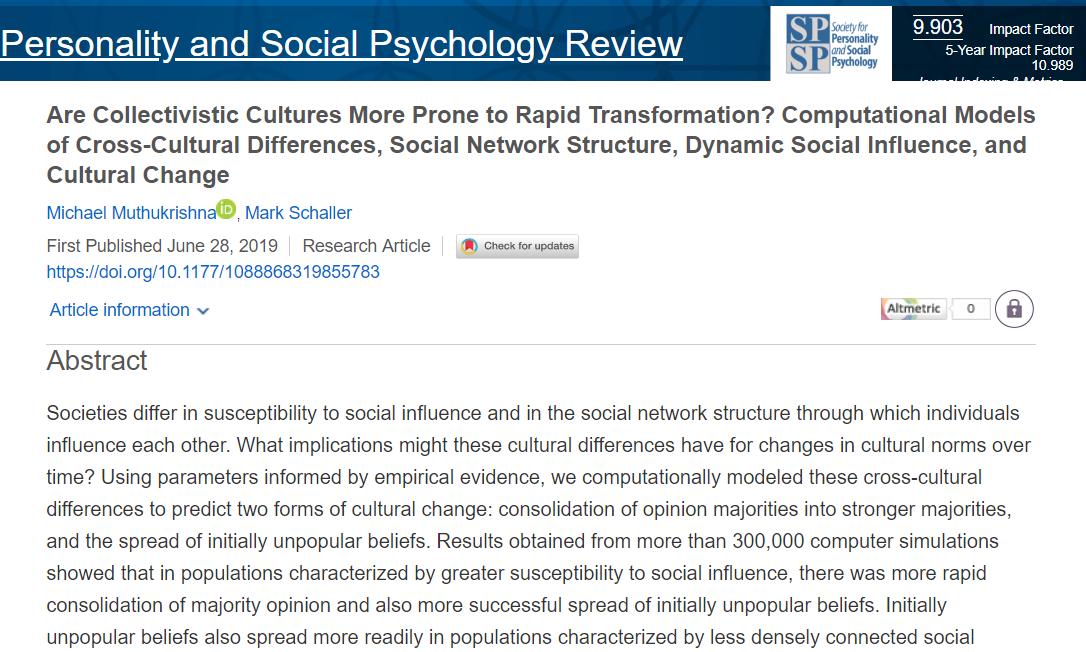I was invited to speak at University of California Merced‘s Department of Cognitive and Information Sciences as part of the Mind, Technology, and Society Invited Speaker series.
I presented a recent paper on the Paradox of Diversity in the Collective Brain. The most relevant papers are:
- Muthukrishna, M., Doebeli, M., Chudek, M., & Henrich, J. (2018). The Cultural Brain Hypothesis: How culture drives brain expansion, sociality, and life history. PLOS Computational Biology, 14(11): e1006504. [Download] [Supplementary] [Summary Post] [Publisher] [Twitter]
- Muthukrishna, M. & Henrich, J. (2016). Innovation in the Collective Brain. Philosophical Transactions of the Royal Society B: Biological Sciences, 371(1690). [Telegraph] [Scientific American] [Video] [Evonomics] [LSE Business Review] [Summary Post] [Download] [Data] [Publisher]
- Schimmelpfennig, R., Razek, L., Schnell, E., & Muthukrishna, M. (2021). Paradox of Diversity in the Collective Brain. Philosophical Transactions of the Royal Society B: Biological Sciences. [Download] [Summary Post] [Publisher] [Twitter]

















